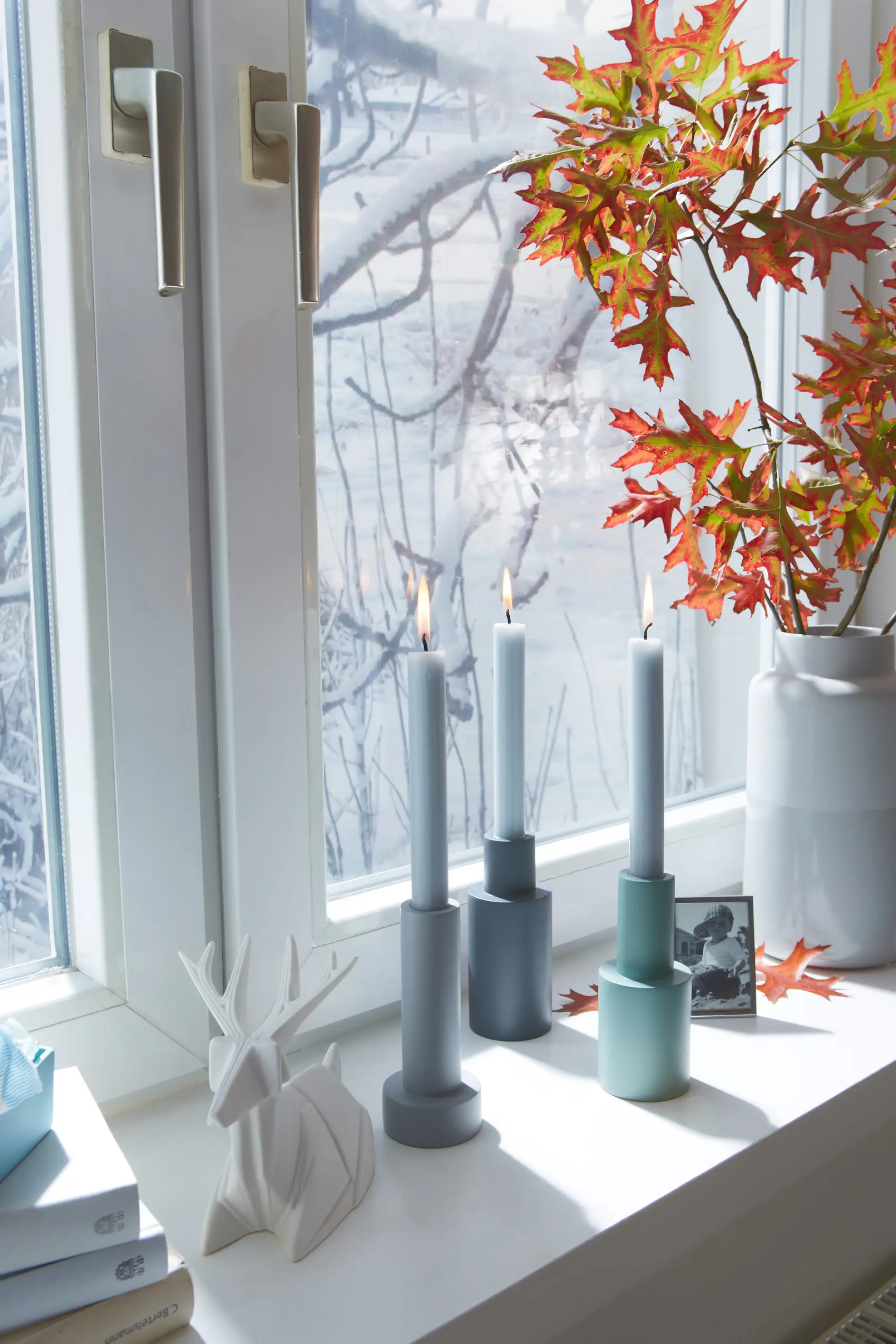Physicist Joachim Zeller of ebök, an engineering office located in Tübingen (Germany), has been working on energy saving strategies for over 20 years. He reveals how small measures can increase your energy efficiency and cut your energy costs.
Saving Energy
Energy hogs are everywhere in a home. Warmth is most likely to escape through uninsulated exterior walls, roofs, or ground story floors, while cold air from outside enters via small gaps in windows as well as front and terrace doors, causing further heating costs. Frequently, there’s also a great potential for savings in how you pre-set the heating and how you air your rooms. Here, you’ll learn how to lower your energy costs easily with the energy saving products from tesa. Moreover, we’ll show you other ways to save energy at home!
Thermal Insulation – The Basis for Successfully Saving Money

Save energy by insulation windows
If your home wasn’t built according to the state of the art, there are most likely many ways to save energy. A low-energy home these days consumes only some 20 percent of the heating oil of a home built in the 1960s. The primary reason for this enormous savings is the right thermal insulation. A good heat insulation is the be all and end all of saving energy. Poor insulation just lets the expensive heating energy evaporate.
Through roofs, exterior walls, and windows, the warmth is seeping out of houses. Warm air rises to the top, collecting under ceilings and roof. Thus, it doesn’t come as a surprise that a poorly insulated roof lets the warmth escape right there. With the tesa ISO SYSTEM®, we offer a compact range for DIY interior roof insulation that is as simple as it is sustainable. That way, costs and energy can be saved effectively.
The area behind radiators is also frequently responsible for a lot of energy loss. That’s why you should take a look at the tesa® Reflector Foil, which sends the warmth back into the room.
Insulating Windows and Doors – Simple and Effective with tesamoll®
Especially older houses still have windows and doors that are real energy hogs. This applies in particular to windows and doors made from wood or windows with single glazing. Wood changes over time, creating small gaps which allow cold air to effortlessly enter the inside of your home. In order to continue having a pleasant room temperature there, additional energy is needed. If completely replacing doors and windows is too expensive for you, we can offer you two smart options to achieve notable savings in a flash. Our energy saving products like our windows insulation tape make this possible!
One the one hand, you’ll find several tesamoll® sealing strips in our range, allowing you to quickly and simply keep drafts outside. You can choose between rubber profiles and sealing strips made of rubber foam. Choosing a product depends on the width of the gap to be sealed as well as the desired durability and quality. On the other hand, we also offer the window insulation film tesamoll® Thermo Cover which also reduces energy loss. You can learn from our energy savings calculator how much energy you can save with our tesamoll® energy saving products. Under optimal conditions, up to 40 percent of energy savings are possible!
This is how you can check your windows: Stick a sheet of paper in-between window and frame – if the paper can be easily pulled out, the seal is insufficient. Repeat the test in various places. With a burning candle, you can easily detect permeable spots. The check is easier when it’s windy or cold.
Other Ways to Save Energy in Your Home

Candles in front of a insulated window in winter
Airing Your Rooms the Right Way…
- Airing quickly: Leaving the window partly open and going out – especially in the winter months, that isn’t a good idea because your home will go cold. Instead, it’s much better to do quick pulses of airing, i.e. opening the windows all the way two to three times a day.
- Adequate airing: In the winter time, air two to three times a day for 5 to 10 minutes each; in the spring and fall, air in pulses of ca. 15 to 30 minutes.
- Airing as needed: Not all rooms need to be aired equally often. Bedrooms and kid’s rooms are ideally aired right after getting up in the morning. Kitchen and bathroom require fresh air more often because of the increased humidity.
- Airing in general: Airing is absolutely necessary in winter because the walls can’t “breathe.” Without airing, the moisture can’t be evacuated. The result: mold formation.
Heating the Right Way...
- Pay attention to the recommended temperatures: bedroom (16-18 °C), stairs and hallways (14-15 °C), kitchen (18 °C, at night: 14 °C), living rooms (20 °C, at night: 14 °C) and bathrooms (23 °C, at night: 14 °C). Reducing the temperature by one degree leads to a 6 percent reduction of heating costs.
- Do not block radiators with furniture.
- Insulate wall behind radiator
- Release the air from a radiator when it’s making gurgling noises.
- Do not set the warm water temperature above 60 °C. Insulate warm water pipes.
- Close shutters and drapes so that less warmth is lost.